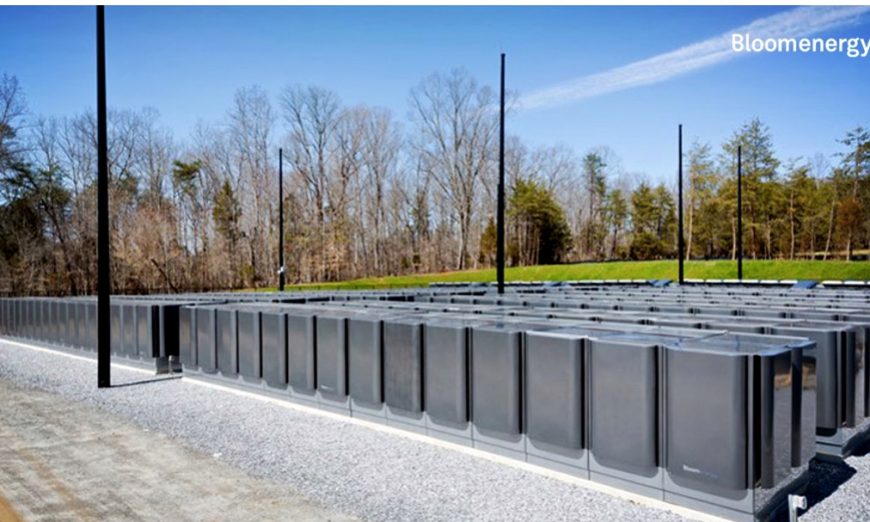Bloom Energy’s media blitz accusing Santa Clara of hypocrisy and market interference is based on misrepresentations, say City officials as well as Santa Clara’s unofficial environmental advisor Sudhanshu Jain.
On May 7 the Santa Clara City Council approved new requirements for onsite electrical generating — also called micro-grid and self-generation — systems connected to Santa Clara’s publicly owned electric utility, Silicon Valley Power (SVP). The new regulations require these systems to use renewable resources. Bloom’s fuel cell technology — Bloom Box energy servers — uses natural gas, a fossil fuel, in a chemical reaction to produce electricity.
A micro-grid system isn’t emergency backup. It’s a miniature electrical grid that can switch between off- and on-the-grid operation. Bloom’s fuel cells are their customers’ primary source of electricity, connected to the SVP grid as the backup or to provide additional power.
That’s Bloom’s business: replacing other way of generating electricity with Bloom Boxes. The company sells to public agencies as well as private businesses, and names among its customers Yahoo!, Google, Kaiser Permanente, Wal-Mart and Delaware electric utility Delmarva.
Bloom’s first misrepresentation, say City officials, is that the City is “banning” Bloom’s technology. The second is that Bloom Boxes are cleaner electricity than SVP’s.
In fact, the City isn’t banning anything, as Acting SVP Director Manuel Pineda pointed out several times during the May 7 Council meeting. If Bloom’s fuel cells used biogas — also called landfill gas and a renewable resource — they would conform to City requirements.
SVP customers are free to install any kind of standalone emergency backup generation they want, explained Pinedo. “We’re not banning fuel cells as backup or as primary energy off the grid. [But] Bloom has told us that doesn’t make financial sense [for their business].”
Further, the City is grandfathering in existing Bloom customers as well as those who have already submitted applications to SVP. “We want to make sure we’re fair to all businesses and applicants,” said Pineda.
Cleaner? Not, Says the City
Bloom’s claims that its fuel cells are cleaner energy than SVP are misleading in several ways, says environmentalist Suds Jain.
“They say ‘we don’t burn anything,'” Jain explained. “But they’re creating carbon dioxide [a greenhouse gas]. When you burn methane you get CO2 and water. Exactly what you get with a chemical reaction in a fuel cell: CO2 and water. It’s not necessarily more efficient.”
Further, Jain said, Bloom is “cherry picking” to support its claim that its fuel cells are cleaner than SVP’s. “They’re comparing to an old gas-fired plant that isn’t even running all the time.” That plant runs intermittently, about 250 hours a year, according to Pineda — 3 percent of the year.
Emissions from Santa Clara’s Don Von Raesfeld power plant — opened in 2007 — are comparable to those of fuel cells and further, the plant’s “dual cycle,” reusing steam in a second turbine, is highly efficient, says Pineda.
“DVR was built with key technologies for efficiency and minimizing emissions,” he said. The plant must receive permits from the air management district and “we are watched very carefully. We meet all the air management district requirements.”
Further, Bloom’s logic doesn’t reflect the real world, says Pineda. “Bloom asked us to look at their fuel cells and offset our natural gas facility, but that’s not really the way our procurement works,” Pineda told the City Council on May 7. “We really can’t replace part of our portfolio when a Bloom Energy fuel cell is functioning.”
Jain suggests another way to look at the comparison.
“If you take the aggregate [of SVP’s generation] it’s cleaner than the Bloom Box. Including large hydro-power — which state doesn’t include in renewable energy statistics — SVP’s power is 72 percent carbon free. Only 28 percent is natural gas. A Bloom Energy fuel cell will continuously provide zero percent renewable energy and continuously emit greenhouse gas,” Pineda said at the May 7 meeting.
“They could very well have said, ‘we’re going to commit to 100 percent renewable [biogas] as a compromise to meet California renewable energy standards,'” said Jain. “But Bloom told the City Council on May 7 that biogas would be too expensive. So instead, they’re employing lobbyists to get special perks.”
There’s another aspect to the discussion of environmental impact, says Jain: the environmental cost of fossil fuel extraction. “Although Bloom Boxes don’t contribute to particulate pollution,” said Jain, “methane fracking and the leakage of methane contribute far more to global warming than SVP. The more Bloom Box installations, the more fracking.”
Bloom Hits City on CEQA and “Monopoly” Practices
Bloom, on its part, has come out swinging against Santa Clara in the media and marshaled a letter-writing army of well-credentialed critics of the City’s action.
In addition, the company’s attorneys sent two letters to Santa Clara; one accusing the City of violating federal anti-trust laws [Bloom anti-trust letter May 2019] and the other demanding that the City perform an environmental impact study. [Bloom ceqa letter may 2019]
However, Bloom says it’s not planning litigation at this time.
“We’ve not taken any action. We felt there were significant oversights” in the City’s new requirements, said Bloom VP of Communications David McCulloch. “We do think a CEQA [California Environmental Quality] study should have been done, and we are considering all our options.”
The fuel cell ordinance “will have an opposite” impact than what the City claims, McCulloch continued. “We and quite a number of others filed opposition to that on various grounds and we’re considering all options.






